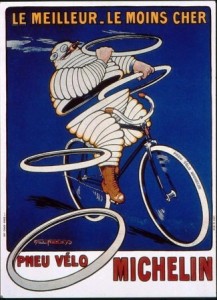The problem with all-season tires is just that. By trying to come up with rubber compounds and tread designs that work year round, engineers trade off such things as maximum traction on dry pavement, or noise generated by the tread, or the best grip in snow. Moreover, early versions of such tires were mediocre at best.
Forced by fuel economy regulations, automakers have specified as original equipment a type of all-season tire known as fuel-saving to help improve ratings for quite some time. Tires with lower “rolling resistance”—the amount of force that it takes to roll a tire down a road—are more fuel-efficient than others, but trade-offs are made to achieve this.
However, replacement tires are not limited to an automaker’s requirements, and tire companies aggressively market attributes such as all-season grip and tread life with less emphasis on other areas of performance.
If you thought about it at all, a replacement tire choice was a compromise between low rolling resistance and other attributes—such as good dry- and wet-weather grip for stopping and cornering.
Consumer Reports’ latest tests of two all-season, low-rolling resistance tires – the Michelin Energy Saver A/S and the Cooper GFE – show that they not only save gas, but also deliver good stopping and handling capabilities.
Both the Michelin Energy Saver A/S and Cooper GFE fared well in the tests, but the Michelin was exceptional, according to the non-profit organization. It not only had the lowest rolling resistance of any all-season tire that CR has tested in recent years, it also scored “Very Good” in dry and wet braking.
The Cooper GFE’s rolling resistance was not as low as the Michelin’s, but it performed well in tests of hydroplaning resistance and emergency handling and was rated “Good” for both snow traction and ice braking.
Rolling resistance accounts for about 4% of a vehicle’s fuel use in city driving and about 7% on the highway, according to the U.S. Department of Transportation., which is working on clearer labels and ratings for tires. Replacing high-rolling resistance tires can result in as much as $100 in annual fuel savings—and potentially hundreds of dollars over the life of the tire the way CR figures it.
Caveats are needed: Consider your driving style and the road conditions that you are likely to encounter. Buyers in northern states may prefer a tire that delivers great traction on wet or snowy roads – or fit dedicated snow tires during the winter. Drivers in warmer climates may put more emphasis on dry braking or ride comfort scores.
“Short term savings are relatively small. But most consumers will likely see long-term fuel savings over the life of a tire,’ said Gene Petersen, a senior engineer for Consumer Reports who oversees tire testing. “No matter what tire your car is rolling on, it’s critical to maintain proper inflation.”

